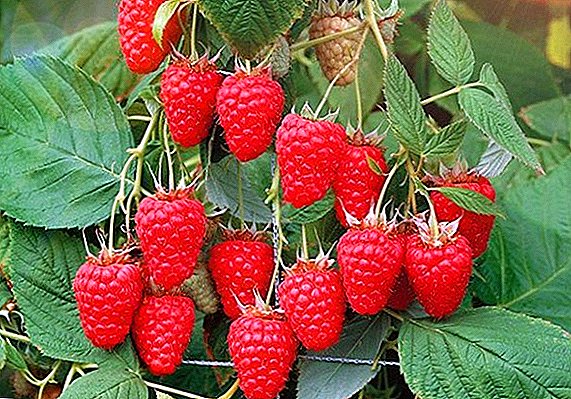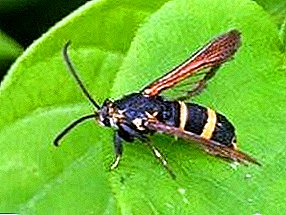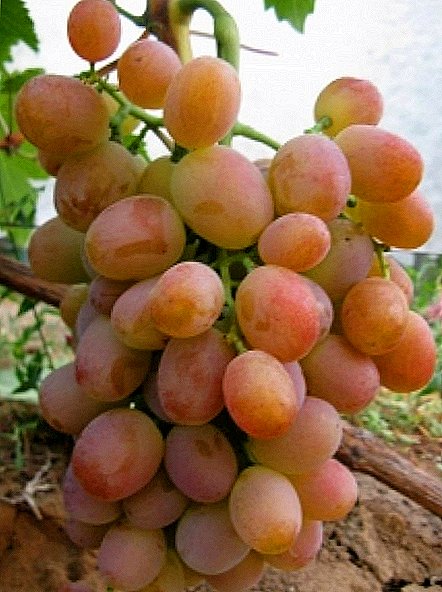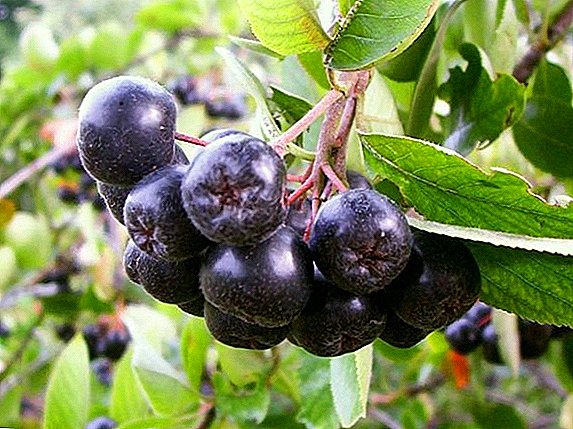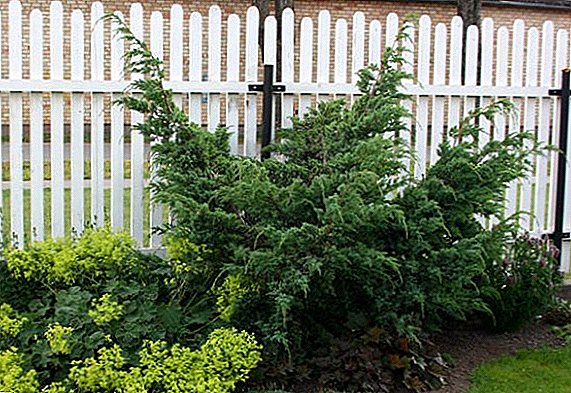 Many of us have heard the name juniper more than once, but not everyone knows what kind of plant it is and what aspects of its cultivation. If you want to give your summer cottage a mysterious breathtaking oriental civilization, you can take advantage of the planting of Chinese juniper. The atmosphere of the East soars in the name. Juniper will look good on estates, in rock gardens, rabatkah. The plant is so versatile that it can be given any shape, adjusting it to an existing landscape design.
Many of us have heard the name juniper more than once, but not everyone knows what kind of plant it is and what aspects of its cultivation. If you want to give your summer cottage a mysterious breathtaking oriental civilization, you can take advantage of the planting of Chinese juniper. The atmosphere of the East soars in the name. Juniper will look good on estates, in rock gardens, rabatkah. The plant is so versatile that it can be given any shape, adjusting it to an existing landscape design.
Did you know? Even in the times of ancient Egypt, juniper was considered a kind of air filter.
Chinese juniper: species description
Chinese juniper has the following description. This plant is originally from Northeast China, Manchuria. Shrubs or trees of Chinese juniper can be both single and bisexual. Plant height reaches 25 meters. The crown of trees, depending on the variety, may be columnar, narrow or wide cone-shaped.
Shrubs have a creeping, spherical or pyramidal crown. The branches of the plant are erect, have a dark green color. The thickness of the shoots reaches 2.5 mm. The bark has a gray-red color, exfoliates. The needles of shrubs (trees) can be needle-like or scaly. Cones can be angular, elongated or spherical. Juniper fruits are covered with a bluish bloom. As the cones ripen, their color changes from green to brown, blue or black. The diameter of the fruit does not exceed 9 mm. Inside the cones are oblong triangular seeds of brown color. Cones ripen within two years.  Chinese juniper is quite simple to grow. Juveniles grow slowly, then the growth rate increases. Chinese juniper belongs to frost-resistant, drought-resistant plants that easily carry high levels of smoke and gases in the air. As a room flower, Chinese juniper Stricta is grown in containers, giving it the appearance of bonsai or forming a dwarf from a plant.
Chinese juniper is quite simple to grow. Juveniles grow slowly, then the growth rate increases. Chinese juniper belongs to frost-resistant, drought-resistant plants that easily carry high levels of smoke and gases in the air. As a room flower, Chinese juniper Stricta is grown in containers, giving it the appearance of bonsai or forming a dwarf from a plant.
Important! Growing Chinese juniper in room conditions, do not forget that in the winter it is necessary to spray more often.
Features of planting Chinese juniper in the garden
As the juniper grows with creeping shrubs or tall trees, a place for planting should correspond to it. Choosing a plot on which the plant will grow, you need to consider how much space it takes, whether it will interfere with already growing green pets.
How to choose the soil for planting
 Since the habitat of shrubs and trees of Chinese juniper is a steppe and forest-steppe, it is not picky about soil fertility. Most often for planting seedlings prepare a substrate of peat, sand and sod soil in the following ratio 2: 1: 1. Given the characteristics of varieties, the ratio of the components of the substrate change. The soil should not be neutral.
Since the habitat of shrubs and trees of Chinese juniper is a steppe and forest-steppe, it is not picky about soil fertility. Most often for planting seedlings prepare a substrate of peat, sand and sod soil in the following ratio 2: 1: 1. Given the characteristics of varieties, the ratio of the components of the substrate change. The soil should not be neutral.
Choosing a place for planting Chinese juniper
The area where juniper grows should be well lit. Wherein The plant does not tolerate long-term direct sunlight, therefore the place of planting of a bush (tree) should be shaded. The plant does not tolerate full shade and loses its decorative appearance: the shoots are deformed, the needles crumble.
Did you know? The life span of juniper is about 600 years.
How to plant Chinese juniper
Chinese juniper can be planted in a container or planted in open ground. How to start a shrub (tree) on your site is also up to you. There are several ways of breeding Chinese juniper: seed, cutting, seedlings. Let's take a closer look at each of them.
Reproduction of Chinese Juniper Seeds
 If you like experimenting and messing with seeds, then this method of breeding juniper suits you. Before sending the seeds to the soil, you need to stratify themi.e. for a month, they are mixed with wet sand, stored in a room with an air temperature of at least +20 ºC, then for another four months they are kept at 15 ºC.
If you like experimenting and messing with seeds, then this method of breeding juniper suits you. Before sending the seeds to the soil, you need to stratify themi.e. for a month, they are mixed with wet sand, stored in a room with an air temperature of at least +20 ºC, then for another four months they are kept at 15 ºC.
Sow the seeds in the month of May, pre-freeing them from the shell and breaking the top layer in the planting fossa. For the best development of the germ in a hole with a depth of no more than 3 cm, it is necessary to place the soil from under the bushes or juniper trees. This will allow mycorrhiza to spread, without which the development of the plant root system would not be complete. It is done.
Now have patience, because the first shoots will appear within 1-3 years. At emergence of shoots it is necessary to mulch a ridge with seedlings. Periodically water the seedlings, loosen the ground and free the plants from weeds. The emerged shoots are better for two - three weeks to priten, so that the seedlings do not get stung. Upon reaching the seedlings of three years of age, they are sent with a near-clod to their final place of residence.
Planting seedlings
Chinese Juniper prefers to plant it in the garden according to all canons. It is best to plant seedlings of conifers in spring, during the beginning of active sap flow, or in late autumn. Weather for landing should be wet. Since grown plants are difficult to tolerate transplantation, it is necessary to preserve the integrity of the root coma. In case of violation of the integrity of the root coma, the root system is better treated with a root growth biostimulator. At the bottom of the landing pit lay drainage layer of up to 15 cm of stones or bricks. The seedling is placed in a planting pit, the depth of which is no more than 70 cm, so that the place of turning the root into a stem rises above the edge of the planting hole for at least 10 cm. Soaking the earthen clod in water in advance (up to two hours).
Important! You can buy seedlings only in containers, because in the open air the juniper root system dies within an hour.
The reproduction of Chinese juniper cuttings
Cutting is a faster and more efficient conifer breeding process than breeding with the help of seeds. Another positive aspect of this process is the number of seedlings, which you can adjust depending on your needs. Material for cuttings are cut in February from lignified young stock. Shoots should be no shorter than 7 cm with two internodes. Another very important point is that the shoots are not cut with shears, and gently tear off. At the bottom of the cutting should be part of the bark from the parent escape.
 The shoots are dipped in "Kornevin" and placed in a ready substrate (1: 1: 1 of sand, peat, manure), which is sprinkled on top with a layer of 3-4 cm coarse sand. Depth seeding cuttings up to 2 cm. Cuttings cover banks. Landing area for planting material should be well lit. Until the seedlings are well rooted, it is necessary to irrigate them regularly. Until early September, the cuttings take root. Replace them with shkolki no earlier than two years.
The shoots are dipped in "Kornevin" and placed in a ready substrate (1: 1: 1 of sand, peat, manure), which is sprinkled on top with a layer of 3-4 cm coarse sand. Depth seeding cuttings up to 2 cm. Cuttings cover banks. Landing area for planting material should be well lit. Until the seedlings are well rooted, it is necessary to irrigate them regularly. Until early September, the cuttings take root. Replace them with shkolki no earlier than two years.
Chinese juniper: care
Chinese juniper is not very whimsical, but still worth knowing how to care for him. Before you get this ornamental plant, you need to familiarize yourself with some aspects of its cultivation. The main thing to take care of is to prevent spring burns, avoid fungal diseases, and provide full winter care.
Watering and spraying
Chinese juniper as a decorative culture can be grown only by providing it with full care. At first, until the juniper roots have grown and are not able to fully receive water from the ground, watering should be frequent. During a drought, young stock is irrigated at least four times a month. In order to preserve moisture in the soil, the juniper root zone is mulched with sawdust or straw. Adult plants are watered no more than once a month. After irrigation, the soil of the trunk circle is fluffed. Since the Chinese juniper does not tolerate the dryness of the airspace, in dry weather the plant should be irrigated with water at least once a week in the evening.
 Chinese juniper grown in the garden, requires preventive treatments in the spring. In late April - early May, trees or shrubs are sprayed with a fungicide solution (1% Bordeaux mixture). Inseminated plants are treated with insecticides.
Chinese juniper grown in the garden, requires preventive treatments in the spring. In late April - early May, trees or shrubs are sprayed with a fungicide solution (1% Bordeaux mixture). Inseminated plants are treated with insecticides.
Did you know? Scientists have found in the composition of juniper berries, in addition to resins and essential oils, also acetic, malic and formic acid.
Fertilizer and dressing
When grown on fertile soil fertilizer is not necessary. In other growing conditions, in the spring (April - May), plants are fed up, applying about 40 g / m² of nitroammophos or complex fertilizers to the soil. In the summer, do not feed. In the winter (October - November) fertilized with potash fertilizers.
Cutting and trimming the crown
Chinese juniper requires pruning annually. To form the juniper begin only a year after disembarking in open ground. Since juniper is an ornamental plant, it can have a curly hairstyle.
 Pruning of bushes and trees is carried out from March to October. The average daily temperature should be at least four degrees. Forming haircut carried out twice a year. The first is held in February-March, until the growing season began, the second - in August, so that the regrowth branches woody until the beginning of winter. To reduce the level of stress and create a lush crown, during the second pruning cut off a third of the length of the shoot from the increase for the current season. The branches on which the needles are missing are also cut out. Make the trimming trim, be sure to process the crown growth biostimulator.
Pruning of bushes and trees is carried out from March to October. The average daily temperature should be at least four degrees. Forming haircut carried out twice a year. The first is held in February-March, until the growing season began, the second - in August, so that the regrowth branches woody until the beginning of winter. To reduce the level of stress and create a lush crown, during the second pruning cut off a third of the length of the shoot from the increase for the current season. The branches on which the needles are missing are also cut out. Make the trimming trim, be sure to process the crown growth biostimulator.
As you know, trimming Chinese juniper is not necessary. There are varieties that can easily be given the desired shape with the help of vertical supports or pin shoots to the ground.
Important! It is necessary to work with juniper in gloves, because the plant is poisonous.
Features care for Chinese juniper in winter
Chinese juniper is a plant, care for which should not stop in the winter. In late autumn, dried, broken and deformed branches should be removed from the bush. This is followed by spraying the near-wellbore soil with a disinfecting solution of Bordeaux mixture. The plant is frost-resistant, does not require shelter for the winter, although the young for the winter is covered with reeds. Adult bushes and trees are wrapped and tied up with a rope. The parts of the plant that have been subject to formation should be covered to avoid their deformation under the thick layer of snow. In winter, in the period of a large amount of snow, it should be shaken off.



